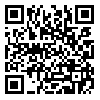Volume 14, Issue 3 (2011)
mjms 2011, 14(3): 15-24 |
Back to browse issues page
Download citation:
BibTeX | RIS | EndNote | Medlars | ProCite | Reference Manager | RefWorks
Send citation to:



BibTeX | RIS | EndNote | Medlars | ProCite | Reference Manager | RefWorks
Send citation to:
Pirestani M, Sadraei J, Forouzandeh Moghadam M. Detection and genotyping of human-associated microsporidia in pigeon Columba livia of Tehran in 2010. mjms 2011; 14 (3) :15-24
URL: http://mjms.modares.ac.ir/article-30-8459-en.html
URL: http://mjms.modares.ac.ir/article-30-8459-en.html
Detection and genotyping of human-associated microsporidia in pigeon Columba livia of Tehran in 2010
1- Ph.D. Student, Department of Parasitology & Entomology, Faculty of Medical Sciences, Tarbiat Modares University, Tehran, Iran
2- Assistant Professor, Department of Parasitology & Entomology, Faculty of Medical Sciences, Tarbiat Modares University, Tehran, Iran
3- Associated Professor, Department of Biotechnology, Faculty of Medical Sciences, Tarbiat Modares University, Tehran, Iran
2- Assistant Professor, Department of Parasitology & Entomology, Faculty of Medical Sciences, Tarbiat Modares University, Tehran, Iran
3- Associated Professor, Department of Biotechnology, Faculty of Medical Sciences, Tarbiat Modares University, Tehran, Iran
Abstract: (5462 Views)
Objective: Microsporidia are ubiquitous opportunistic pathogens infecting all animal phyla. The purpose of this study was to characterization human-associated microsporidia in pigeons of Tehran by staining and molecular methods.
Materials and Methods: In the year 2010 a total of 147 pigeon’s fecal samples were randomly collected from bird stores and public parks of Tehran and screened for the existence of human pathogenic microsporidia by staining method and multiplex/Nested-PCR and RFLP techniques.
Results: Nineteen (12.92%) of the studied samples were positive by microscopic examination, and 31 (21.08%) isolates were detected with specific primers. Genotyping based on the ITS regions of the rRNA gene were done for the Entrocytozoon bieneusi, Encephalitozoon intestinalis, Enc. hellem and Enc. cuniculi, respectively. The genotypes of Ent. bieneusi were identical to the D, M and J; genotypes of Enc. hellem were similar to the genotype 1 and 3 and genotypes of Enc. cuniculi were equal to I and II genotypes which previously characterized in human and animal origins.
Conclusion: These results revealed that there is no limits to microsporidia transmission between pigeons of Tehran and humans for human infective species. This study points to the hygienic importance of this bird, because feces of pigeons are one of the sources of infection with microsporidia in human and easily pollutes our environment; on the other hand, children and elderly people comprise the principal visitors of public parks and they are the populations at risk for microsporidiosis.
| Rights and permissions | |
 |
This work is licensed under a Creative Commons Attribution-NonCommercial 4.0 International License. |







